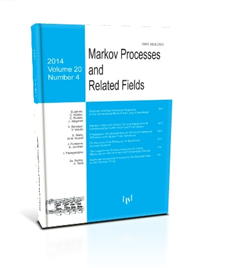Two-Scale Contact Process and Effects of Habitat Fragmentation on Metapopulations
L. Belhadji, N. Lanchier
2008, v.14, Issue 4, 487-514
ABSTRACT
Particle systems are usually defined on a homogeneous graph, the interaction neighborhoods of sites of the graph are linked to each other by translation. In this article, we study the contact process on a non homogeneous graph designed to model the interactions within metapopulations. The d-dimensional lattice is turned into a "chessboard" through the superposition of a mesoscopic lattice on the usual microscopic lattice. Each site of the mesoscopic lattice is the center of a square of the chessboard. Interactions occur at both site (microscopic) level and square (mesoscopic) level. The superposition of two interaction levels induces two birth rates, called microscopic and mesoscopic birth rates. Similarly, deaths occur at both levels: individual deaths at microscopic level, and mass extinctions (destruction of all the particles contained in a given square) at mesoscopic level. Our "two-scale" contact process can be viewed as a metapopulation model describing the evolution of a set of interacting local populations. We study the effect of coarseness, defined as the ratio of the mesoscopic scale over the microscopic scale, on the survival probability of the particle system. We find that, in the absence of mass extinctions, particles are more likely to spread out as coarseness increases, even if the mesoscopic birth rate decreases significantly with the square size. In the presence of mass extinctions, coarseness has only a limited effect.
Keywords: interacting particle system,contact process on a finite set,spatial structure,multiscale argument,spatial ecology,metapopulation
COMMENTS
Please log in or register to leave a comment

